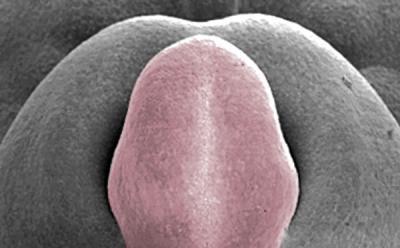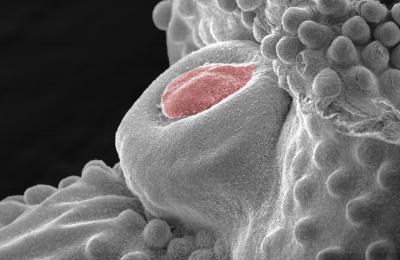In animals that reproduce by internal fertilization, as humans do, the penis is invaluable, from an evolutionary point of view.
Yet birds have evolved to not need them. Developmentally speaking, birds' penises have gone. Land fowl, which have only rudimentary penises as adults, have normally developing penises as early embryos. Later in development, however, the birds turn on a genetic program that leads their budding penises to stop growing and then wither away.
"Regulation of the balance between cell proliferation and cell death is essential for controlled growth and development," said Martin Cohn of the Howard Hughes Medical Institute and University of Florida, Gainesville. "Too much cell division or too little cell death can lead to overgrowth or mis-regulated growth, as in cancer. If the balance is tipped in the other direction, deficient cell division or excess cell death can lead to underdevelopment or even absence of a tissue or organ.
"Our discovery shows that reduction of the penis during bird evolution occurred by activation of a normal mechanism of programmed cell death in a new location, the tip of the emerging penis."

This is an embryonic chicken penis (pseudo-colored red) viewed under a scanning electron microscope. Credit: C.L. Perriton and M.J. Cohn
A critical gene in the process is one called Bmp4. In chicken development, Bmp4 switches on and the birds' developing genitals shrink away. In more well-endowed ducks and emus, that gene stays off and their penises continue to grow.
It's not entirely clear why chickens and other birds would have lost their penises, said graduate student Ana Herrera, lead author of the study, but it may be that the loss leaves hens with greater control over their reproductive lives.

This is a developing penis (pseudo-colored red) of a chick embryo before it regresses, viewed under a scanning electron microscope. Credit: A.M. Herrera and M.J. Cohn, University of Florida
The findings could have implications for understanding evolutionary loss more broadly. (Think of snakes and their lost limbs, as another example.) They might yield some answers to medical questions as well.
"Genitalia are one of the fastest-evolving organs in animals, from mollusks to mammals," Cohn said. "It is also the case that genitalia are affected by birth defects more than almost any other organ. Dissecting the molecular basis of the naturally occurring variation generated by evolution can lead to discoveries of new mechanisms of embryonic development, some of which are totally unexpected. This allows us to not only understand how evolution works but also gain new insights into possible causes of malformations."
Published in Current Biology.






Comments